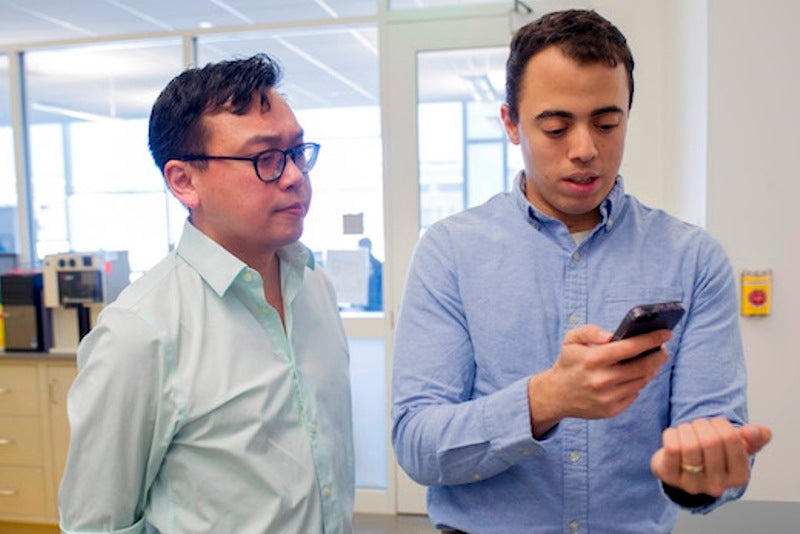
US researchers have developed a smartphone app through which users can take photos of their fingernails to determine their haemoglobin levels.
The app is claimed to enable self-management for patients suffering from chronic anaemia. It has been designed to allow patients to monitor their disease and identify the times when they need to adjust their therapies or receive transfusions, thereby minimising side effects or complications of having transfusions too early or too late.
The researchers analysed photos of fingernails and then correlated the colour of the fingernail beds with haemoglobin levels measured by CBC in 337 people, of whom some were healthy, and others had a variety of anaemia diagnoses.
They developed an algorithm for converting fingernail colour to blood haemoglobin levels with 237 people and then tested it on 100.
Through a single smartphone image, with no personalised calibration, haemoglobin levels could be measured with an accuracy of 2.4 grams/deciliter with a sensitivity of up to 97%.
With personalised calibration, tested on four patients over several weeks, indicated improvement in the accuracy to 0.92 grams/deciliter, on par with point-of-care blood-based haemoglobin tests.
How well do you really know your competitors?
Access the most comprehensive Company Profiles on the market, powered by GlobalData. Save hours of research. Gain competitive edge.

Thank you!
Your download email will arrive shortly
Not ready to buy yet? Download a free sample
We are confident about the unique quality of our Company Profiles. However, we want you to make the most beneficial decision for your business, so we offer a free sample that you can download by submitting the below form
By GlobalDataEmory University School of Medicine associate professor of paediatrics and the study’s principal investigator Wilbur Lam said: “All other ‘point-of-care’ anaemia detection tools require external equipment, and represent trade-offs between invasiveness, cost, and accuracy.
“This is a standalone app that can look at haemoglobin levels without the need to draw blood.”
Lam is also a clinical haematologist-bioengineer at the Aflac Cancer and Blood Disorders Center of Children’s Healthcare of Atlanta, and a faculty member in the Wallace H. Coulter Department of Biomedical Engineering at Georgia Tech.
The app is part of the PhD work of former biomedical engineering graduate student Rob Mannino, who suffers from beta-thalassemia, an inherited blood disorder caused due to a mutation in the beta-globin gene.
Mannino said: “Treatment for my disease requires monthly blood transfusions. My doctors would test my haemoglobin levels more if they could, but it’s a hassle for me to get to the hospital in between transfusions to receive this blood test. Instead, my doctors currently have to just estimate when I’m going to need a transfusion, based on my haemoglobin level trends.”
Lam added: “He took pictures of himself before and after transfusions as his haemoglobin levels were changing, which enabled him to constantly refine and tweak his technology on himself in a very efficient manner. So essentially, he was his own perfect initial test subject with each iteration of the app.”
According to the researchers, the app can be used only for screening, and not clinical diagnosis.
As this technology could be used by anyone at any time, it can be appropriate for pregnant women, women with abnormal menstrual bleeding, or runners/athletes.
Due to its simplicity, it could be useful in developing countries.
Strict accuracy requirements are mandatory for clinical diagnostic tools. The researchers believe that with additional research, they expect to eventually achieve accuracy to replace blood-based anaemia testing for clinical diagnosis.
Anaemia is a blood condition that affects two billion people worldwide and can lead to fatigue, paleness and cardiac distress if left untreated. The current gold standard for anaemia diagnosis is known as a complete blood count (CBC).
This research was supported by the National Science Foundation, the 2017 Massachusetts General Hospital Primary Care Technology Prize, and the National Institutes of Health.



